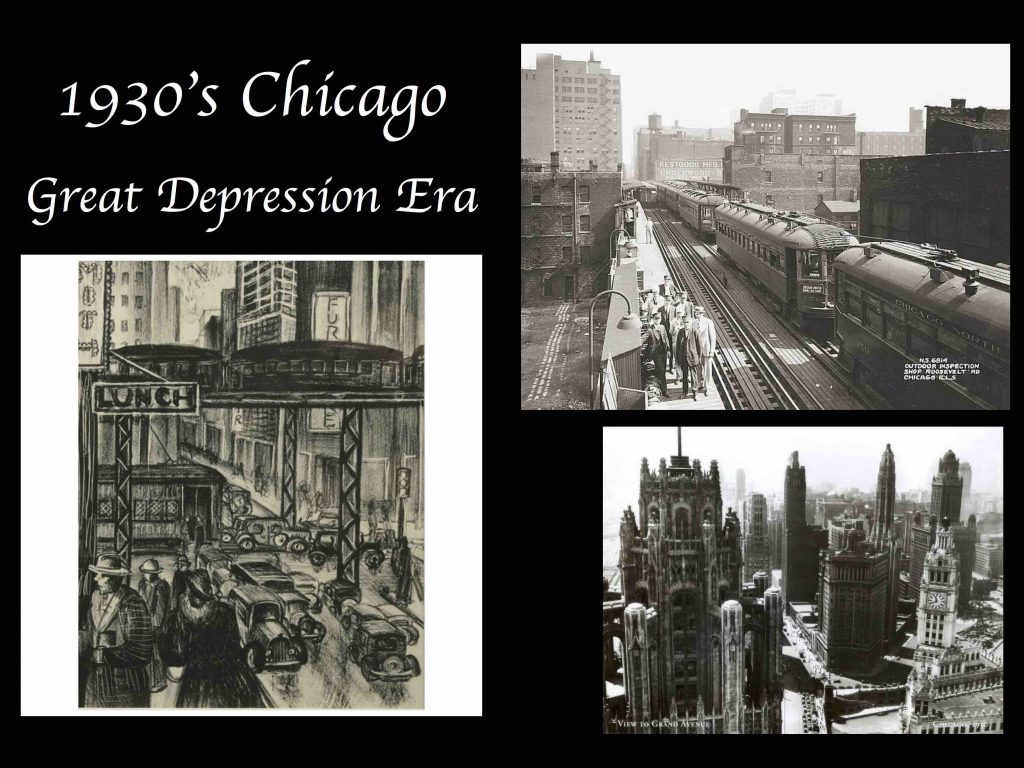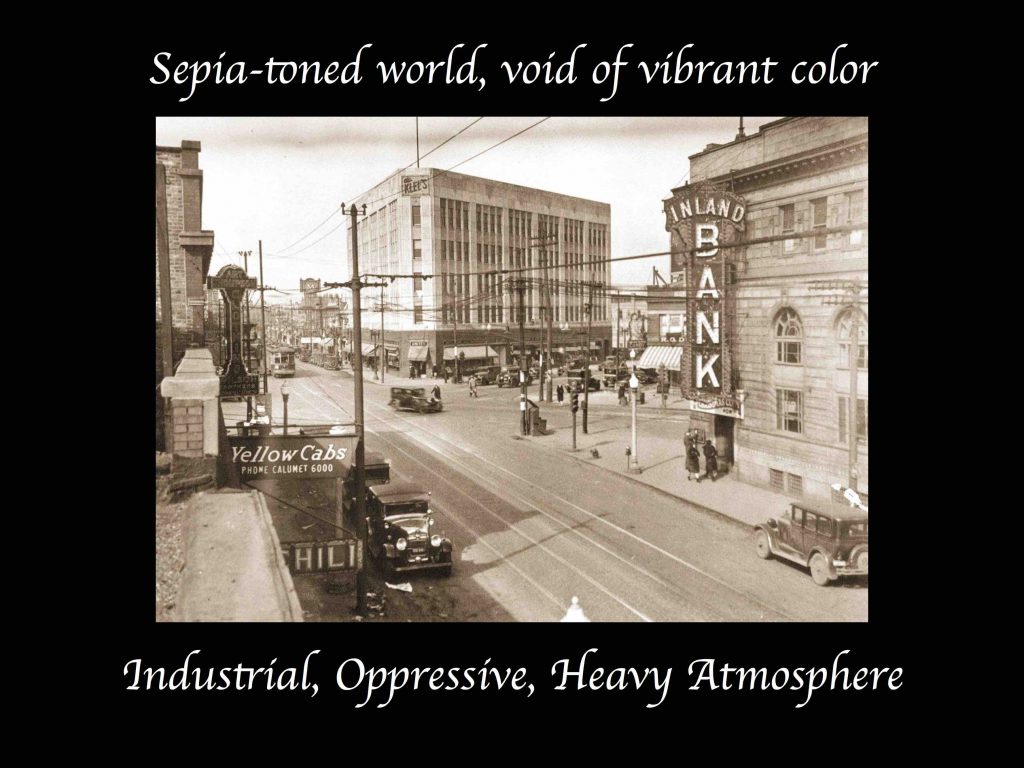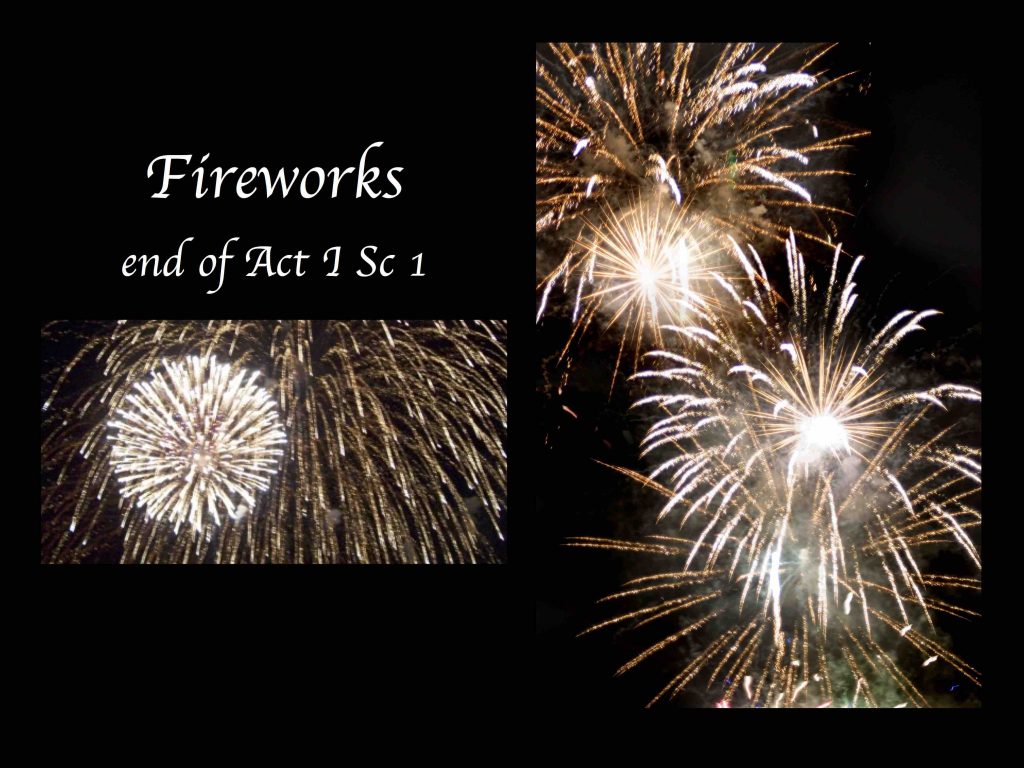 As I discussed in an earlier blog post, in the Forest of Arden is as much a state of mind—a locus of thought, desire, and fancy—as an actual place. At the same time, the process of staging the play in a particular time and place—giving it “a local habitation and a name,” in the words of Theseus in A Midsummer Night’s Dream—means spending some time thinking about how the real, historical world might interact with the imaginary world of our production. Continue reading “Our Arden”
As I discussed in an earlier blog post, in the Forest of Arden is as much a state of mind—a locus of thought, desire, and fancy—as an actual place. At the same time, the process of staging the play in a particular time and place—giving it “a local habitation and a name,” in the words of Theseus in A Midsummer Night’s Dream—means spending some time thinking about how the real, historical world might interact with the imaginary world of our production. Continue reading “Our Arden”
Author: Ian Munro
Hopping Trains: Firsthand Accounts
 While the idea of the hobo utopia was a genuine draw to many people during the Great Depresssion, it’s important not to forget that poverty and desperation were the principal motivations for joining the transient populations. Errol Uys, author of Riding the Rails: Teenagers on the Move During the Great Depression (2014), has a wonderful website with hundreds of firsthand stories of young people’s experiences during the period. In particular, they offer a vivid picture of what hopping trains was really like. Some excerpts follow.
While the idea of the hobo utopia was a genuine draw to many people during the Great Depresssion, it’s important not to forget that poverty and desperation were the principal motivations for joining the transient populations. Errol Uys, author of Riding the Rails: Teenagers on the Move During the Great Depression (2014), has a wonderful website with hundreds of firsthand stories of young people’s experiences during the period. In particular, they offer a vivid picture of what hopping trains was really like. Some excerpts follow.
Robert Lloyd:
I was one of those unfortunates who had to ride the rails during the Great Depression, and have many stories to tell of the so-called ‘trials and tribulations’ we kids had to face, some of them quite gruesome.
I once saw as many as one hundred hoboes on one train. Some were whole families with small children. They had no place to go, nor anything to do when the got there. I saw the dead, empty, defeated look in they eyes, when they were told to move on, wherever they tried to stop. Continue reading “Hopping Trains: Firsthand Accounts”
Big Rock Candy Mountain and the Hobo Utopia
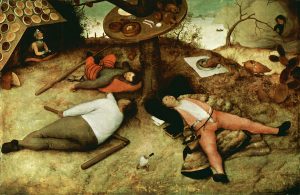 Charles’ longing description of the Forest of Arden has its roots in classical myth, but his desire to “fleet the time carelessly” might also be connected to another mythic tradition: the Land of Cockaigne. Cockaigne was a medieval peasant utopia, a magical realm of ostentatious gluttony, continual drunkenness, sexual abandon, and complete idleness. The 14th-century poem “The Land of Cockayne” tells of an abbey where “pies and pastries form the walls,” among other delights, describing how roasted geese “fly to the abbey (believe it or not) / And cry out ‘Geese, all hot, all hot!'” and larks “land in your mouth, well-cooked and tame.” More than merely an escape from the brutalities of peasant life, Cockaigne was a kind of parodic paradise, devoted to the cares of the flesh instead of the soul. As the poem observes, “Though paradisal joys are sweet, / There’s nothing there but fruit to eat.”
Charles’ longing description of the Forest of Arden has its roots in classical myth, but his desire to “fleet the time carelessly” might also be connected to another mythic tradition: the Land of Cockaigne. Cockaigne was a medieval peasant utopia, a magical realm of ostentatious gluttony, continual drunkenness, sexual abandon, and complete idleness. The 14th-century poem “The Land of Cockayne” tells of an abbey where “pies and pastries form the walls,” among other delights, describing how roasted geese “fly to the abbey (believe it or not) / And cry out ‘Geese, all hot, all hot!'” and larks “land in your mouth, well-cooked and tame.” More than merely an escape from the brutalities of peasant life, Cockaigne was a kind of parodic paradise, devoted to the cares of the flesh instead of the soul. As the poem observes, “Though paradisal joys are sweet, / There’s nothing there but fruit to eat.”
In 1928, Harry McClintock recorded a modern version of the Land of Cockaigne, based (he claimed) on the tales he heard as a young hobo traveller. “The Big Rock Candy Mountain” begins with a tramp walking past the campfires of a hobo “jungle,” declaring, “I’m headed for a land that’s far away / Beside the crystal fountain,” and inviting the others to join him in its unique pleasures:
In the Big Rock Candy Mountains,
There’s a land that’s fair and bright,
Where the handouts grow on bushes
And you sleep out every night.Where the boxcars all are empty
And the sun shines every day
On the birds and the bees
And the cigarette trees
The lemonade springs
Where the bluebird sings
In the Big Rock Candy Mountains. Continue reading “Big Rock Candy Mountain and the Hobo Utopia”
Lighting Design Concepts
Karyn Lawrence, lighting designer for our shows this year, asked me to upload her ideas for the locations of As You Like It. (Lighting is crucially important in the New Swan, and you can see how powerful the effects are going to be in this production.)
Welcome!
 Welcome to New Swan Shakespeare Festival’s As You Like It production blog. We’re using this space as a kind of bulletin board for members of the creative team to share the work that they’re doing on the show, and as a kind of billboard where interested patrons can get a sense of what’s going on. Please feel free to comment on posts, if you have comments to make, and check back often–new posts should be going up fairly regularly between now and Opening Night.
Welcome to New Swan Shakespeare Festival’s As You Like It production blog. We’re using this space as a kind of bulletin board for members of the creative team to share the work that they’re doing on the show, and as a kind of billboard where interested patrons can get a sense of what’s going on. Please feel free to comment on posts, if you have comments to make, and check back often–new posts should be going up fairly regularly between now and Opening Night.
Looking forward to a great show! — Ian Munro, Dramaturg
Where is Here?
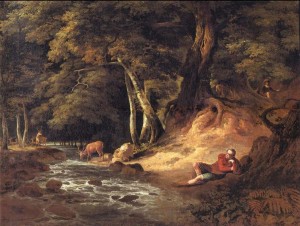 Shakespeare takes the principal location of his play from his narrative source, Thomas Lodge’s Rosalynde, which is set in the Ardennes Forest in France. But what kind of place is the Forest of Arden? Our first glimpse comes early, when the wrestler Charles gossips with the courtier LeBeau about the banished Duke Senior:
Shakespeare takes the principal location of his play from his narrative source, Thomas Lodge’s Rosalynde, which is set in the Ardennes Forest in France. But what kind of place is the Forest of Arden? Our first glimpse comes early, when the wrestler Charles gossips with the courtier LeBeau about the banished Duke Senior:
They say he is already in the forest of Arden, and a many merry men with him; and there they live like the old Robin Hood of England: they say many young gentlemen flock to him every day, and fleet the time carelessly, as they did in the golden world.

